2022-2023 SCHLANGER FELLOWS


Isabel Dove
University of Rhode Island
Tracking oceanographic changes and climate implications in Holocene Antarctic coastal zones

Anya Hess
Rutgers University
Evolution of the Arabian Sea Oxygen Deficient Zone following the Middle Miocene Climate Optimum: Global and Regional Drivers

Kayla Hollister
University of Notre Dame
Investigating the influence of sea surface temperatures on Southeastern African hydroclimate during the mid-Pleistocene Transition

2021-2022 SCHLANGER FELLOWS

Peter Davidson
Oregon State University
Re-examining the temporal history of the Ontong Java Nui Large Igneous Province and its causal relations to OAE1A

Mohammed Hashim
Western Michigan University
Parsing the diagenetic pathways of carbonate metastable sediments on the slope of the Great Bahama Bank

Basia Marcks
University of Rhode Island
Did iron fertilization increase biogenic sediment accumulation in the subantarctic across the Mid-Pleistocene Transition?

Ronnakrit Rattanasriampaipong
Texas A&M University
Long-term continuous sea surface temperature record of tropical Atlantic across the Cenozoic era

Anna Schartman
University of California, Santa Cruz
The origins of an ecosystem: Rooting the African Savanna in the middle Miocene
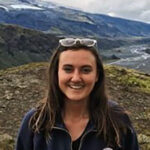
Rebecca Stout
University of Washington
Fingerprinting low-frequency Holocene climate variability across spatial scales

Hannah Tandy
University of California, Los Angeles
Novel constraints on pole-to-equator temperature gradients over the Paleocene-Eocene Thermal Maximum
2020-2021 SCHLANGER FELLOWS

SARAH MCGRATH
Brown University
What drives the Indian Summer Monsoon? New perspectives from the Bay of Bengal

NICOLETTE MEYER
Stanford University
Fire and famine: Controls on microbial activity in the deep hydrothermal subsurface of the Guaymas Basin

NICHOLAS SULLIVAN
University of Wisconsin-Madison The integration of astrochronology and constrained optimization (CONOP) to resolve the history of the Southern Ocean during the neogene
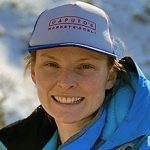
COURTNEY WAGNER
University of Utah
Quantifying magnetofossil assemblages: Implications for paleoecology, diagenesis, and past, present, and future global change

YUXIN ZHOU
Lamont-Doherty Earth Observatory
Heinrich Event ocean circulation and iceberg melting in the North Atlantic during the last glacial period
2019-2020 SCHLANGER FELLOWS

KIMBERLY BERYL DELONG
University of California, Santa Cruz Reconstructing Nitrogen Cycling and Ecosystem Structure in the Bering Sea Through the Anomalously Warm, High- Productivity, Hypoxic Bolling-Allerod Event

KYLE METCALFE
California Institute of Technology
Mineral-Associated Microbial Ecology of the Deep Subsurface, Nankai Trough, Japan

KELLI MULANE
Scripps Institution of Oceanography
Investigating the Piezophilic Microbial Communities of Mariana Forearc Serpentinite Mud Volcanoes

SAMUEL PHELPS
Lamont-Doherty Earth Observatory
The Role of Atmospheric CO2 in Late Miocene Environmental Change: A Multi-Proxy Study

SHRISHARAN SHREEDHARAN
Pennsylvania State University
Fault Healing and Shallow Slow Slip at the Hikurangi Subduction Margin: The Impact of Normal Stress and Loading-Rate on Friction
2018-2019 SCHLANGER FELLOWS
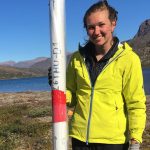
ALLISON CLUETT
University at Buffalo, The State University of New York
Hydroclimate of Southern Greenland during interglacials of the past 600,000 years based on terrestrial leaf wax biomarker isotopes preserved in ocean sediments

COLIN JONES
University of Rhode Island
Oceanographic controls on mid-Holocene nutrient consumption at Palmer Deep, West Antarctic Peninsula
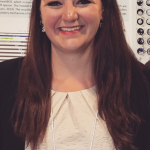
MEGAN MULLIS
Texas A&M University,Corpus Christi Active microbial community survival in Mariana Forarc sediments
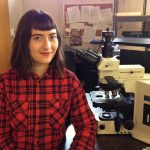
SARAH TRUBOVITZ
University of Nevada
What drives plankton evolution? : An investigation of the paleoenvironmental impacts on radiolarian macroevolution using the contrasting histories of tropical and polar Neogene oceans
2017-2018 SCHLANGER FELLOWS
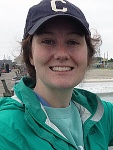
LAURA HAYNES
Lamont-Doherty Earth Observatory Assessing Deep Pacific Carbon Storage Across the Mid-Pleistocene Transition

HEATHER JONES
Pennsylvania State University
Survivorship and recovery of calcareous nannoplankton following the K/Pg mass extinction at “ground zero”

AMY KUZMINOV
Rutgers University
Uranium isotope ratios: a proxy to understand carbon burial in varying redox environments in Ocean Anoxic Event 2
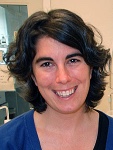
SARAH WHITE
University of California, Santa Cruz Constraining the effect of dissolution on Pliocene West Pacific Warm Pool SSTs and the “permanent El Nino-like state”
2016-2017 SCHLANGER FELLOWS
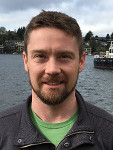
RICHARD BERG
University of Washington
Quantifying Global Rates of Magnesium Uptake into Marine Sediments
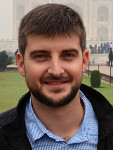
ROBERT POIRIER
Rensselaer Polytechnic Institute Assessing Millennial-Scale Variability in the Densest Limb of Meridional Overturning Circulation During the Prism Timeslice
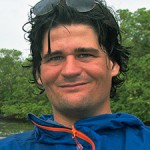
PHILIP STAUDIGEL
University of Miami
The Application of Clumped Isotopes in Studying the Post-Depositional Alternation of Marine Carbonates

JODY WYCECH
University of Wisconsin-Madison Evaluating the Impact of Central American Seaway Closure on Pliocene Walker Circulation
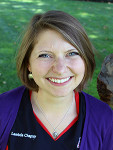
LAURA ZINKE
University of Southern California Active Microbial Carbon Cycling in Baltic Sea Basin Sediments
2014-2015 SCHLANGER FELLOWS

XINGCHEN WANG
Princeton University
Exploring the Late Pleistocene Marine Nitrogen Cycle in the South Pacific using Nitrogen Isotopes from Fossil Corals from Tahiti

JUSTINE SAUVAGE
University of Rhode Island
Global Estimate of Radiolytic Hydrogren Production in Subseafloor Sediment: Importance of Nuclear-Fueled Life in the Deep Seafloor?
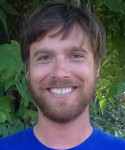
DALTON HARDISTY
University of California – Riverside A Holocene Record of Temporal and Spatial Variability in Oxygen Deficiency in the Baltic Sea
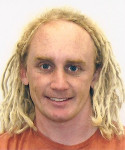
ALAN FOREMAN
University of California – San Diego Evolution of Deep Ocean Temperature Across the Mid-Pleistocene in a South Atlantic Depth Transect

MICHELLE DRAKE
University of California – Santa Cruz A Record of Ice-Rafting in the Bering Sea 1.3-1.6 Ma: Exploring the Influence of Obliquity and Precession on Ice-Sheet Behavior
2013-2014 SCHLANGER FELLOWS

HANNAH LIDDY
University of Southern California Pliocene Northeast African Vegetation Change: Implications for Hominin Evolution and Climate During a Mild Greenhouse
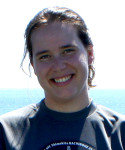
ELIZABETH TREMBATH-REICHERT
California Institute of Technology Characterizing Microbial Transformations of Carbon and Nitrogen in Reducing Subseafloor Coal and Shale Environments
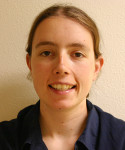
SUSAN SCHNUR
Oregon State University
A Synthesis of the Volcanostratigraphy and Porosity of Pacific Intra-plate Seamounts

HANNAH RABINOWITZ
Columbia University
Determining the Frictional Temperature Rise During the 2011 Tohoku Earthquake

WEILI HONG
Oregon State University
Constraining the Environmental Forcing of Methane Flux Along the Cascadia Margin
2012-2013 SCHLANGER FELLOWS

YI GE ZHANG
Yale University Late Miocene–Pliocene Evolution of the Pacific Warm Pool and Cold Tongue: Implications for El Niño

TASHA SNOW
University of South Florida
Early Circum-Arctic Glacial Decay During Major Deglaciations of the Past 500 kyr

KARLA KNUDSON
University of California – Santa Cruz Abrupt Changes in Oxygen Recorded in New Laminated Sediments from the Bering Sea (1.2-0 Ma)
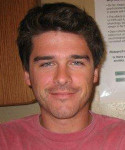
JOSEPH RUSSELL
University of Delaware Genomic Analyses of Microbial Cultivations in Unexplored Sub-seafloor Ridge Flank and Continental Margin Environments
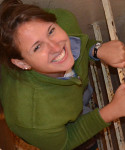
LAUREL CHILDRESS
Northwestern University
Tracking Multicycle Carbon in Active Margin Environments
2011-2012 SCHLANGER FELLOWS
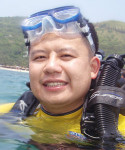
HUAPEI WANG
Rutgers – The State University of New Jersey Paleomagnetic Inclination Flattening Corrections of IODP/ODP/DSDP Cores by Comparing Inclination Distributions to the TK03.GAD Model: Implications for Paleo-latitudes and Plate Tectonics

AMANDA OEHLERT
University of Miami Decoupling of Organic and Inorganic δ13C Records in Periplatform Sediments: A global phenomenon

FABIAN BATISTA
University of California – Santa Cruz Nitrogen Dynamics of the Western Pacific from the Warm Pliocene and into the Ice Ages

TALI BABILA
Rutgers – The State University of New Jersey Assessing the Phase Relationship of Temperature and pCO2 during the Paleocene-Eocene Thermal Maximum
2010-2011 SCHLANGER FELLOWS
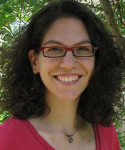
JULIA SCHNEIDER
University of Texas at Austin
Resedimentation of Nankai Mudstones to Illuminate Lithologic Control on Permeability and Compressibility

SEAN JUNGBLUTH
University of Hawaii at Manoa
Application of Environmental Genomics to Understanding the Potential Impact of Microorganisms on the Biogeochemistry of the Sediment-Covered Oceanic Basement

YOUNG JI JOO
Northwestern University
Relative Roles of Carbon, Nitrogen, Phosphorus, and Sulfur During Cretaceous Oceanic Anoxic Events’s
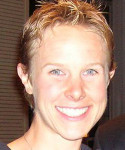
GRETCHEN GEHRKE
University of Michigan
Mercury Deposition and Cycling During the Paleocene-Eocene Thermal Maximum: An Investigation Using Mercury Stable Isotopes
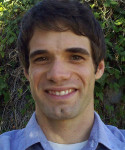
KELSEY DYCK
University of California – Santa Cruz Western Pacific Warm Pool Sensitivity to Climate Change
2009-2010 SCHLANGER FELLOWS

STELLA WOODARD
Texas A&M University
Early Paleogene Eolian Dust in the Pacific Ocean: Is There a Connection Between Dust Flux and Orbitally Paced Lithologic Cycles?

LEAH SCHNEIDER
Pennsylvania State University
The Influence of Nannoplankton and the Oceanic Biological Pump on Eocene Climate Change
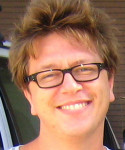
FRANCOIS PAQUAY
University of Hawaii at Manoa
Marine Osmium and Molybdenum Isotopes as Proxies for the Late Paleocence-Early Eocene Arctic Ventilation and Paleo-Redox Changes
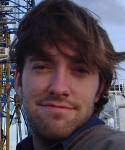
MATTHEW KNUTH
University of Wisconsin – Madison Dynamic Velocity Under Stress During Shear: A New Technique Using P and S-Waves to Study the Frictional Mechanics of the Upper Nankai Trough Accretionary Prism
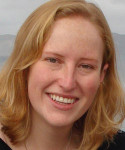
HEATHER FORD
University of California – Santa Cruz Investigating ENSO Variability Over the Past 5 Million Years
2008-2009 SCHLANGER FELLOWS

ROBERT VIESCA
Harvard University Fundamental Modeling of the Initiation and Propagation of Submarine Sediment Failure

HAOJIA (ABBY) REN
Princeton University Study of Ocean Nitrate δ15N Changes over Glacial Cycles at ODP Site 999 Using Foraminifera Bound Nitrogen

SRINATH KRISHNAN
Yale University Investigation of the Global Hydrological Cycle During Greenhouse-Gas Induced Warming
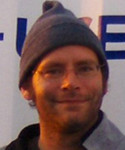
GREG HORN
University of Southern California Encouraging Life in the Slow Lane: Development of Solid-Substrate Coninuous Culture Techniques for the Enrichment of Deep-Biosphere Organisms

ANDREA ERHARDT
Stanford University Using Molybdenum Isotopes and Concentrations in Marine Barite to Document Changes in Ocean Anoxia
2007-2008 SCHLANGER FELLOWS

MASAKO TOMINAGA
Texas A&M University Determination of Volcanostratigraphy of ODP/IODP Hole 1256D: Core-log Integration of Oceanic Crust Formed at a Superfast Spreading Rate
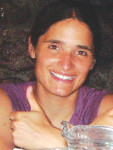
SINDIA SOSDIAN
Rutgers University The Mid-Pleistocene Transition: Deep Sea Temperature and Global Ice Volume from Mg/Ca and δ18O in Benthic Foraminifera
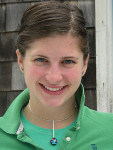
HEATHER SCHRUM
University of Rhode Island Quantification of Low Rates of Metabolic Activity in the Deep Subseafloor Using Sulfate Oxygen Isotopic Compositions

DANIEL MURPHY
Texas A&M University North Pacific Intermediate Water Circulation Over the Last 60 kyr: Southern California Margin

BENJAMIN HARRISON
California Institute of Technology Novel Methods for Characterizing Microbe Mineral Colonization Patterns in Deep Subsurface Marine Sediments
2006-2007 SCHLANGER FELLOWS

HEATHER MCCARREN
University of California – Santa Cruz Depth Dependent Variations in Deep Water Chemistry & Temperature Across the P/E Boundary

SAM VANLANINGHAM
Oregon State University
Documenting the Source of the Meiji Toungue Over the Last 200,000 Years: Implications for Deep Water Dynamics in the North Pacific

PATRICK RAFTER
Scripps Institution of Oceanography Tropical Pacific Nutrient Dynamics Over the Past 1 Million Years: Mechanistic Insight to the Origin of the 100 Kyr Climate Cycle

MICAH NICOLO
Rice University Eolian Grain-Size Records Across the Paleocene-Eocene Transition: Constraints on Atmospheric Circulation During Global Climate Change

MARK LEVER
University of North Carolina at Chapel Hill Community Composition, Metabolism and Activity of Methanogens at Two Ocean Drilling Program Sites

HIROKO KITAJIMA
Texas A&M University Sediment Consolidation State and Fluid Flow Properties of Nankai Trough and Cascadia Margin Accretionary Zones

PAUL CRADDOCK
Woods Hole Oceanographic Institution Using New In Situ Laser-Ablation ICP-MS Techniques to Examine Geochemical Heterogeneity Within Hydrothermal Vent Deposits

ALEXANDRA ABRAJEVITCH
University of Michigan
Rock Magnetic Record of the Asian Monsoon Preserved in Bengal Fan Sediment: A New Look at an Old Problem
2005-2006 SCHLANGER FELLOWS

HEATHER MCCARREN
University of California – Santa Cruz Depth Dependent Variations in Deep Water Chemistry & Temperature Across the P/E Boundary

SAMUEL HULME
University of Hawaii at Manoa
Lateral and Vertical Biogeochemical Fluxes in a Juan de Fuca Ridge Flank Hydrothermal Reservoir: Minor and Trace Element Systematics

GRAHAM BAINES
University of Wyoming
Thermal and Tectonic Evolution of Lower Oceanic Crust at an Ultra-Slow Spreading Ridge
2004-2005 SCHLANGER FELLOWS

XIAOLI LIU
Pennsylvania State University
Multiphase Flow Modeling of Gas Hydrate systems at Hydrate Ridge and Blake Ridge

JENNIFER BIDDLE
Pennsylvania State University
Exploration of Subsurface Microorganisms: FISH-SIMS and Cultivation Studies of Sediment Gathered on ODP Leg 201

SHARON HOFFMAN
Woods Hole Oceanographic Institution Pa/Th and Stable Isotopic Records of Deep Water Circulation During the Last Interglacial

ALEXANDRA TURCHYN
Harvard University
Oxygen Isotopes in Marine Sulfate Over the Cenozoic
2003-2004 SCHLANGER FELLOWS

IVAN SAVOV
University of South Florida
The Role of Forearc in Subduction Zone Chemical Cycles: Elemental and Light Isotope Signatures for Serpentinites from South Chamorro and Conical Seamount

STEPHANIE HEALEY
University of South Carolina
A 500,000 Year Record of Deep Sea Temperature and Ice Volume Based on Benthic Foraminiferal Mg/Ca and d18O

MATTHEW O’REGAN
University of Rhode Island
Lateral Fluid Flow in the Nankai Trough Study Area

JOSHUA FEINBERG
University of California – Berkeley Magnetization of Seafloor Gabbros: Characterization of Crystallographically Oriented Magnetite Inclusions

KRISTINA DAHL
Woods Hole Oceanographic Institution Holocene Reconstruction of the Summer and Winter South Asian Monsoon

ANNA CIPRIANI
Lamont-Doherty Earth Observatory Space/Time Mantle Heterogeneity Below the Mid Atlantic Ridge: an Isotopic Study of Peridotites and Gabbros Drilled during Leg 209
2002-2003 SCHLANGER FELLOWS

KRISTEN AVERYT
Stanford University
Marine Barite as a Monitor of Seawater Sr/Ca Ratios

MATTHEW SCHMIDT
University of California – Davis
Temperature and Hydrological Changes in the Western Caribbean and the Tropical Pacific During the Last 750 kyr

MATTHEW MAKOWSKI
MIT/WHOI Joint Program
Characteristics of Aeolian Organic Matter in a Terrestrial-to-Marine Depositional Transect and Impliations for Millennial-Scale Tropical Climate Change

MICHAEL HUTNAK
University of California – Santa Cruz The Thermal and Hydrothermal State of Subducting Lithosphere: Costa Rica Margin” ODP Leg 205

HEATHER BENWAY
Oregon State University
Reconstructing Pycnocline Intensity in the Gulf of Panama to Monitor Low-Latitude Response to Neogene Closure of the Panama Isthmus

LORRAINE LISIECKI
Brown University
Faster and More Accurate Construction of Composite Depth Sections Using Dynamic Programming

NICHOLAS DRENZEK
Woods Hole Oceanographic Institution Spatial and Temporal Variations in the Mixed Layer Radiocarbon Reservoir Age Through the Last Glacial Maximum
2001-2002 SCHLANGER FELLOWS

MATTHEW SCHMIDT
University of California – Davis Temperature and Hydrological Changes in the Western Caribbean and the Tropical Pacific During the Last 750 kyr

CARA SANTELLI
MIT/WHOI Joint Program The Role of Microorganisms in Alteration of Basaltic Glass in Deep Oceanic Subsurface Environments

MARIA PROKOPENKO
University of Southern California Fractionation of Nitrogen Isotopes During Early Diagenesis in the Sediments of Peru Margin

BENJAMIN CRAMER
Rutgers University Evolution of a Warm Climate: Long-Term Paleoceanographic Trends and Short-Term Orbital Forcing of Climate in the Late Paleocene-Early Eocene
2000-2001 SCHLANGER FELLOWS

JENNIFER LATIMER
Indiana University-Purdue University Indianapolis The Influence of Dust Inputs on Biogeochemical Cycles in the Southern Ocean

ARADHNA TRIPATI
University of California – Santa Cruz Tropical Sea Surface Temperature Reconstruction for the Early Paleogene Using Mg/Ca Ratios of Planktonic Foraminifera

JOAN STEURER
University of Missouri-Columbia Composition, Intrinsic Shear Strength, Physical Properties, and Texture of Sediment at the Nankai Trough, Leg 190: An Integrated Approach

THOMAS WERTH
Scripps Institution of Oceanography Hunting the Geomagnetic Field

KEVIN THEISSEN
Stanford University A Quaternary-Pliocene Foraminifera Stable Istope Record for Prydz Bay, Antarctica

KAREN MCCLAUGHLIN
Stanford University d18O of Phosphate in Organic Matter from Marine Sediments: A Tracer for Paleoenvironmental Conditions
1999-2000 SCHLANGER FELLOWS

ROBERT VALENTINE
Washington University – St. Louis Crustal Recycling at the Izu-Bonin-Mariana Convergent Margin: Constraints from B-, Li-, Be-, and Pb- Isotopes and Trace Element Systematics

BRANDON DUGAN
Pennsylvania State University
Sediment Loading, Lateral Fluid Flow, and Erosion of the Continental Slope in Offshore New Jersey

MICHELLE SHEARER
Rice University
Quaternary Carbonate Preservation and Dissolution in the Caribbean Sea
1998-1999 SCHLANGER FELLOWS

MICHAEL WARA
University of California – Santa Cruz Boron Isotopes in Foraminifera as Tracers of Ocean pH: ODP Site 803D

DEBORAH THOMAS
University of North Carolina at Chapel Hill Reconstruction of Latest Paleocene Thermal Maximum Deep-water Circulation from Neodymian Isotope Records

PETER SELKIN
Scripps Institution of Oceanography Magnetization and Remagnetization of Seafloor Extrusives: Paleointensity, CRM and VRM Experiments
1997-1998 SCHLANGER FELLOWS

KATHERINE MCINTYRE
University of California – Santa Cruz Early Pleistocene Climate Change: The 1.6 Ma Transition

MARK PAGANI
Pennsylvania State University The Carbon Cycle and its Relationship to Climatic Variability in the North Atlantic

HELEN PERKS
Scripps Institution of Oceanography Oxygen Demand Analysis as a Tool for Measuring the Organic Matter Content in Carbonate-rich Sediments

THOMAS MARCHITTO
MIT/WHOI Joint Program Development and Application of Zinc as a Paleoceanographic Tracer

STEPHEN SCHELLENBERG
University of Southern California Geochemical and Faunal Analyses of Ddeep-ocean Ostracodes During Two Transient Climate Extrema of the Paleogene: A Test of Benthic Foram O-based Climate Reconstructions Using Ostracode Mg:Ca Ratios

MICHAEL HELGERUD
Stanford University Experimental Measurement and Theoretical Modeling of the Physical Properties of Sediments Containing Gas Hydrate

STEFANIE BRACHFELD
University of Minnesota Rock-magnetic and Paleomagnetic Techniques for the Examination, Correlation, and Dating of Holocene Paleoclimate Signals in Antarctic Glacial-marine Sediments
1996-1997 SCHLANGER FELLOWS

DANIEL SIGMAN
MIT/WHOI Joint Program Tracking the History of Nutrient Conditions in Southern Ocean Surface Waters Using the Nitrogen Isotopic Composition of Sediments and Sediment Fractions

KATHARINA BILLUPS
University of California – Santa Cruz Reconstructing Pliocene Equatorial Atlantic Surface Water Hydrography

MARK PAGANI
Pennsylvania State University The Carbon Cycle and its Relationship to Climatic Variability in the North Atlantic

PHILIP STAUFFER
University of California – Santa Cruz Modeling Deformation and Dewatering in the Barbados Accretionary Complex: Implications for Proto-decollement Evolution
1995-1996 SCHLANGER FELLOWS

ROISIN LAKINGS
Duke University Paleomagnetic and Rock Magnetic Constraints on Large-Scale Normal Faults on the MAR: Gabbros and Serpentinites from ODP Leg 153

DANIEL SIGMAN
MIT/WHOI Joint Program Tracking the History of Nutrient Conditions in Southern Ocean Surface Waters Using the Nitrogen Isotopic Composition of Sediments and Sediment Fractions

KARIN BERNET
University of Miami The Record of Hierarchies of Sea Level Fluctuations in Cores, Logs, and Seismic Data Along the Great Bahama Bank Transect






